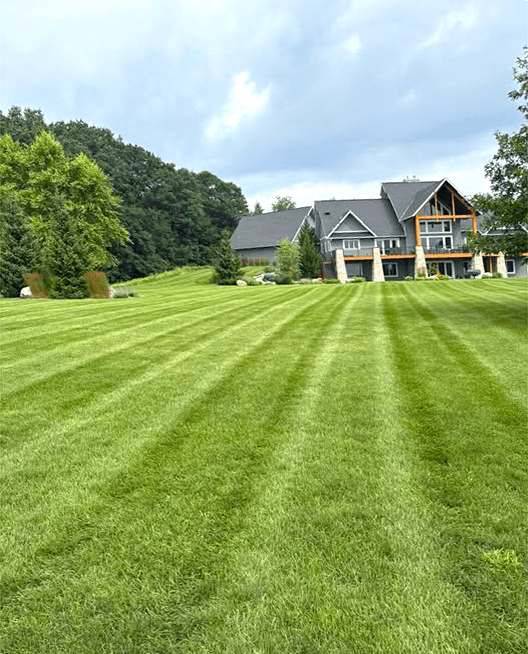After a long, hot summer here in Mid-Michigan, lawns across the Bay City, Saginaw, and Midland areas are showing the wear, thin spots, brown patches, and tired, stressed grass. At Reder Landscaping, we know how much pride homeowners take in having a healthy, green lawn, and right now your turf needs a little extra care to bounce back. The good news? A few smart changes to your lawn care routine can make a big difference in helping your yard recover, stay hydrated, and look its best through the rest of summer.
1. Water Later in the Morning (7–9 a.m.)
Watering during this window gives your lawn the best chance to absorb moisture before the day’s heat peaks. Early enough to minimize evaporation loss, but late enough to avoid pre-dawn watering when the grass stays wet too long. Moisture in the soil during morning hours also helps your turf handle afternoon heat stress better.
2. Never Water After 5 p.m.
When grass stays damp into the evening and overnight, fungal diseases like brown patch and dollar spot thrive, especially in the humid conditions we’ve been experiencing. By cutting off watering before 5 p.m., you give blades time to dry before sunset, keeping your lawn healthier and reducing the need for disease treatments.
3. Give Your Lawn a Mid-Afternoon “Drink” (Only When Needed)
When temperatures climb into the 90s, your lawn can dry out fast and struggle to stay cool. On these extreme days, a short watering between 1–5 p.m. can give your turf a refreshing drink, lowering its surface temperature and easing heat stress. Just 5–10 minutes in the most sun-exposed areas is all it takes. This extra drink isn’t part of your regular watering schedule, use it only when conditions are especially hot, and avoid overwatering at this time, which can encourage shallow root growth.
4. Increase Watering Duration by About 50%
Hot, dry conditions mean your lawn is thirstier than usual. If you normally run your sprinklers for 20 minutes, stretch that to about 30 minutes now. The goal is deep watering that penetrates 6–8 inches into the soil, encouraging roots to grow deeper and stay hydrated longer. Using a screwdriver or soil probe can help you check moisture depth and adjust accordingly.
5. Mow High—3.5 Inches or More
Longer grass blades shade the soil, reducing water evaporation and keeping roots cooler. A taller cut also gives each blade more leaf surface to photosynthesize, fueling recovery. Set your mower deck to its highest setting for the rest of summer, and avoid removing more than one-third of the grass blade in a single mowing to reduce stress.
Why Acting Now Matters
With more hot days ahead and humidity lingering into the evenings, lawns are at high risk for stress and disease. By adjusting your summer lawn care habits now, you can help your turf recover from summer’s beating and set it up for strong growth this fall. And remember, if Mother Nature delivers a soaking rain later this week, you can ease back on manual watering and let nature help with the work.
If you’d like Reder Landscaping’s lawn care experts to assess your yard’s condition and recommend the best recovery plan, we’re here to help. Whether it’s lawn maintenance, irrigation adjustments, or customized turf care programs, our team can give your lawn exactly what it needs to look great again. Click here or call 989.835.8260 to get started today!


Steve,
Nice summary article of the things we have discussed. Thanks, Blair P.
Hi Blair,
We’re glad you found the article helpful and informative.